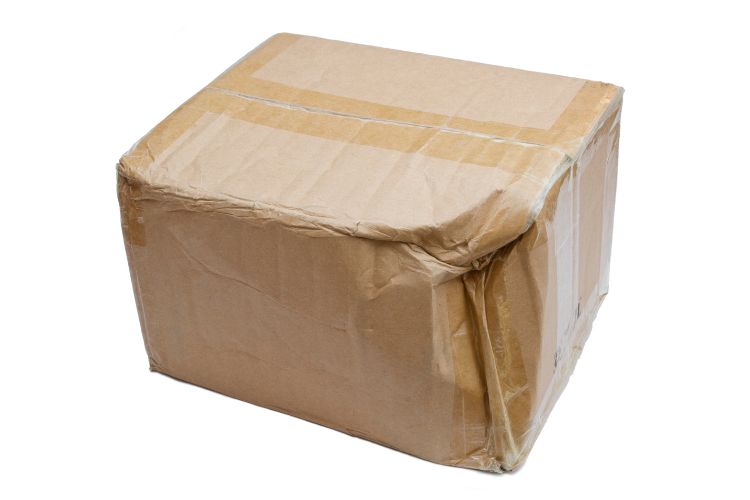Between a rate hike and surcharge increases, the cost of shipping could cost you 9 percent more this year.
If you’re a business owner shipping products to customers, a few of these common shipping mistakes can lead to unnecessary spending and headaches.
If you ship a lot of items for your business, you know how important it is to keep your customers satisfied. Timely delivery and intact products are part of the overall customer experience, so you should ensure your approach to shipping doesn’t cause any bad will.
Make sure you review your shipping process to see if you’re making any of the mistakes listed here. Even small ones can become big drains on your bottom line when you ship a lot of products.
1. Poor Packing
One of the top mistakes is not paying enough attention to using the proper packaging. It protects your product, impacts your brand image, and determines shipping costs. If you’re choosing the wrong packaging, you may end up with damaged products and unhappy customers.
With packaging, you need to consider not just the object’s size but also its weight and how much protective cushioning it needs. Heavier objects need packaging sturdy enough to handle the weight, while delicate ones need extra protection.
Product damage costs fall to you or the shipper. Some carriers have started declining damage claims if the packaging was inadequate, so you might be left eating the cost of replacing the item and shipping it again.
Save yourself the customer service headaches and let a professional package and ship your products for you.

2. Incorrect Shipping Labels
Labels for packaging contain a lot of information these days. When any of it is incorrect, your package might end up where it doesn’t belong, or you might find yourself paying extra weight fees.
The need for correct info starts with the delivery address your customer entered for you. You’ll want to ensure the final shipping address on the package matches what the customer gave you.
Even if you’re printing your labels from info provided by the customer, it’s good to double-check that the zip code and state match and that the printed label is legible.
For freight shipping, the bill of lading includes everything from type and quantity to weight and special delivery instructions. Any incorrect information here can lead to delays in delivery or extra surcharges from the shipper for undeliverable items.
You’ll spend a lot of time and money correcting this mistake at the risk of high customer dissatisfaction. A poor post-purchase experience can lead to 58 percent of customers avoiding making a future purchase with you.
3. Incorrect Weight or Class
If you don’t have the right tools to get a precise weight for your package, you might just estimate based on what you think you know. Guessing can cost you because you might be paying too much to ship it or not putting enough postage on it. Plus, you may have to add extra charges by some carriers if you don’t list the correct weight.
With freight shipping, lower classes cost less, so you might be tempted to underestimate the weight of your shipment. But since the class is based on the weight, your freight carrier will re-weigh everything to ensure they get paid correctly. Incorrect weights can incur fees and a bump up to a higher class.

4. Reliance On One Carrier
You have many choices for carriers these days, and if you ship often, you might think it’s easier to just stick with one for all your needs. But no one shipper is the best option in every scenario, so it pays to compare each of them for each specific use case.
Yes, that can be inconvenient, which is where working with a shipping service makes it easier to take advantage of a multi-carrier environment. You get the flexibility to choose the best carrier for each shipment based on current shipping rates and policies.
5. Not Using the Right Shipping Packaging
Grabbing the first box you find can cost you if you count on a flat rate or dimensional shipping savings to keep costs down. That starts to add up in small ways that can eat into profits before you realize it.
A shipping store like Goin’ Postal can help you choose the proper shipping packaging for your item.
6. Not Tracking
Your job doesn’t stop when the package leaves your hands. Tracking its progress as it makes its way to the customer should also be part of your process. Audit deliveries occasionally to keep up with how often they arrive late or to ensure you get reimbursed for carrier errors.
Requiring delivery receipts helps you track product damage issues, so you have the documentation needed for any potential claims. Any issues should be noted at each stage so you know precisely when any damage happened.
7. Not Offering Shipping Discounts
You work hard to keep your customers, so why not offer them shipping discounts for their loyalty? It’s easier than you think.
When customers feel like they’re getting a good deal, they’re more likely to buy from you again and recommend you to others.
Avoid These Common Shipping Mistakes
From using the wrong packaging to errors in labeling, the common shipping mistakes we’ve covered here cut your profits on every parcel you send out. Spend a little time reviewing your product shipping process to ensure your packages get where you want them to so you can keep your customers happy.
Are you looking into hiring a shipping service to help you with your packages? Visit our convenient locations to learn more about how we can help you save time and money by skipping the lines at the post office and letting us compare rates between the major carriers.

